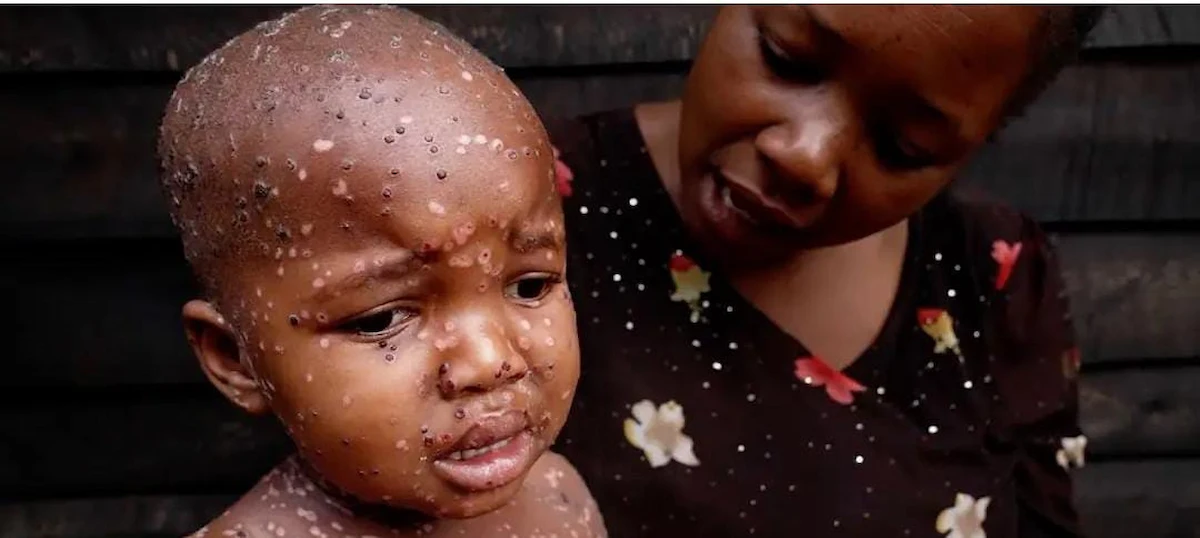Stay informed about the 2024 Mpox outbreak in Congo, including its origins, effects, and measures to control its spread.
Mpox Outbreak 2024
The mining town of Kamituga in the Democratic Republic of Congo is about to become the epicentre of the highly significant Mpox outbreak that shook the country in 2024. Recent reports indicate that the country has seen over 6,500 cases of Mpox, linked to two different strains of the virus, since January. This surge in cases has raised significant concerns not only in Congo but also in neighbouring countries like Burundi, Kenya, Rwanda, and Uganda, where Mpox had never been reported before. A proper understanding of this nature will be critical in preventing further spreading and keeping public health in place.
What is Mpox?
Mpox is similar to smallpox. Originally, it was spread through contact with infected animals, such as rodents and monkeys, usually affecting young children. The trend has altered with cases now being mostly a result of person-to-person infection.
How Did Mpox Break Out?
The WHO raised alarms about the swift spread of the Mpox virus as early as 2022. This led several nations, led by the United States, to start vaccinating with a smallpox vaccine to act as an attempt to limit the outbreak. African countries were still lagging behind, vaccinating in September 2024 as it waited for the WHO to clear the Bavarian Nordic vaccine, Jynneos for use.
On August 27, 2024, the United States promised to supply 10,000 doses of that vaccine, and on September 5, an additional 99,000 doses were committed. Still, most African countries are struggling to access enough vaccines; in many areas, supplies far exceed demand.
Mpox Outbreak in Congo
One interesting feature of the Mpox outbreak is how it affects Congo with a very concentrated effect. Cases of Mpox in the area have gradually increased over the past decade. The outbreak that has been reported is due to two main clade I viruses: clade Ia and clade Ib. Clade Ia mostly occurs in children and most especially during their play activities where children are exposed to the contaminated animals. On the other hand, there have been much higher cases of human-to-human transmission with the cases of clade Ib whereby the most cases occurred due to sexual contact.
Epidemiologist Jean Nachega of the University of Pittsburgh claims that researchers had predicted this outbreak, but the warnings were in vain. Researchers’ lack of attention in terms of resources and preparedness have greatly handicapped the efforts of response to this new public health threat.
Types of Mpox Virus Strains
There are two main clades of Mpox viruses
- Clade II: Principally occurring in West Africa, these viruses have disseminated among humans since 2014, mainly breaking out in 2022.
- Clade I: This clade is essentially restricted to the Democratic Republic of Congo. The newly emergent clade Ib poses a grave public health concern since it spreads extremely efficiently amongst humans with no sexual network restriction.
Specifically in view of alarm, however, are the viruses from Congo: Clade Ib, with mutations that raise its potential for person-to-person transmission far above that of the earlier strains. The Kamituga breakouts have been traced to sexual contact, which creates greater challenges for containing the outbreaks.
Why is Mpox Now Spreading?
The other factor that has led to a surge in Mpox cases is the discontinuation of smallpox immunization in 1980 after it had been declared eradicated. The reason that the population is not as protected as before against both diseases leads to increased infection cases.
In Congo, over half of the confirmed Mpox outbreak cases are among people under 15 years of age. That calls into question how this virus spreads within this age bracket and raises important questions about it. Close contacts with caregivers will be a major mode of transmission for younger children, but older children and teenagers, especially those working in mines, are also particularly at increased risk.
The virus mainly spreads through respiratory droplets that are produced upon talking or coughing by an infected person. Although the major mode of transmission happens through close contact, overcrowding in living conditions, particularly homes in which children share their space with several family members, gives wide opportunities for the spread of the virus.
Role of Vaccines in Controlling Mpox
Vaccination programs represent some of the best preventions against infectious diseases such as Mpox. An estimated number of 10 million doses are estimated to be necessary to manage the ongoing outbreaks, according to the Africa CDC. However, producing and providing vaccines is associated with numerous challenges.
Other such vaccines, such as Jynneos, have already displayed potency against Mpox and more extensive studies are required in order to draw conclusions regarding the efficacy of these vaccines against the novel newly emerged clade Ib viruses. Still, other groups of researchers are working on the development of Mpox-specific vaccines, but so far, there are no results that have come out and have not been published yet.
Aside from vaccination, education is another essential aspect in controlling the outbreak. Communities must be educated on symptoms of Mpox and preventive measures to take so that individuals can adopt precautionary behaviors and keep the virus from spreading. The activist fight during the 2022 Mpox outbreak has been credited with altering behaviors and spreading word about the mode of transmission for social groups.
FAQs
Q: What are symptoms of Mpox?
The symptoms include fever, muscle pain, and a rash that can resemble pimples or even blisters. People may also feel cold and tired.
Q: How do people get infected with Mpox?
Mpox can be spread from animals but can also transmit between humans through direct touch, sexual interaction, and droplets from coughing and sneezing.
Q: Why now in this epidemic?
Declining immunity for smallpox vaccinations has thus made even more vulnerable people susceptible to Mpox. Moreover, human-to-human transmission is also rising with factors like close contact and sexual networks.
Q: What are clade Ia and clade Ib?
The clade Ia is largely confined to children and transmitted more from the contact of infected animals. The clade Ib is very transmissible from human to human and which is causing this current outbreak.
Q: Are there vaccines for Mpox?
Yes, such as Jynneos, but far more will be needed to protect affected populations.
Q: What else can communities do to help regulate the Mpox outbreak?
Raise awareness among the public on Mpox, how it spreads, and methods of prevention and vaccination.
Conclusion
The Mpox outbreak 2024 is a crucial wake-up call for Congo. It’s essential to act swiftly to contain this highly contagious disease before it spirals further out of control.
The mode of transmission and prevention methods for the virus shall be relevant and necessary while handling the public health scourge. Vaccination is only a large part of the solution; education and community health efforts must always be there. Till that hazardous Mpox is completely controlled in Africa, the threat of this disease will not cease to impact not only the countries concerned but the whole world. Only cooperation among, between, and on nations and health organizations can ensure safety prevails for all, especially vulnerable groups, of this highly misunderstood and poorly managed disease.




2 thoughts on “Mpox Outbreak 2024 in Congo: Key Facts and Insights on the Epidemic”